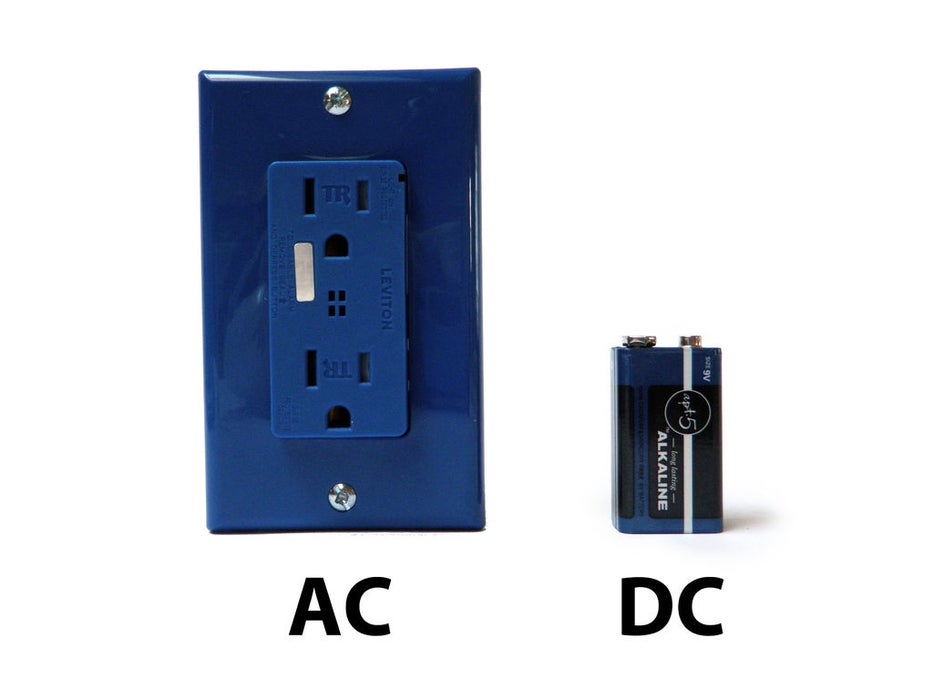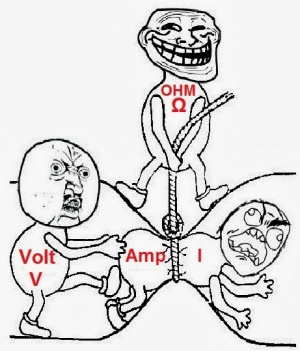Difference between revisions of "An Introduction to Wearable Electronics"
| Line 24: | Line 24: | ||
[[File:Ohm-2527s-Law-funny-Explanation.jpg| 300 px]] | [[File:Ohm-2527s-Law-funny-Explanation.jpg| 300 px]] | ||
| + | |||
| + | == Circuits == | ||
| + | |||
| + | [[file:Open-closed circuit.jpg]] | ||
| + | |||
| + | A circuit is a complete and closed path through which electric current can flow. In other words, a closed-circuit would allow the flow of electricity between power and ground. An open circuit would break the flow of electricity between power and ground. | ||
| + | |||
| + | Anything that is part of this closed system and that allows electricity to flow between power and ground is considered to be part of the circuit. | ||
Revision as of 05:22, 12 January 2020
Basic Introduction to Electronics
Electricity!

There are two types of electrical signals, those being alternating current (AC), and direct current (DC).
With alternating current, the direction electricity flows throughout the circuit is constantly reversing.
You may even say that it is an alternating direction. The rate of reversal is measured in Hertz, which is the number of reversals per second.
So, when they say that the US power supply is 60 Hz, what they mean is that it is reversing 120 times per second (twice per cycle).
With Direct Current, electricity flows in one direction between power and ground. In this arrangement,
there is always a positive source of voltage and ground (0V) source of voltage. You can test this by reading a battery with a multimeter.
Speaking of voltage, electricity is typically defined as having a voltage and a current rating.
Voltage is obviously rated in Volts and current is rated in Amps. For instance,
a brand new 9V battery would have a voltage of 9V and a current of around 500mA (500 milliamps).
Electricity can also be defined in terms of resistance and watts. We will talk a little bit about resistance in the next step,
but I am not going to be going over Watts in depth. As you delve deeper into electronics you will encounter components with Watt ratings.
It is important to never exceed the wattage rating of a component, but fortunately, that Wattage of your DC power supply can easily be calculated
by multiplying the voltage and current of your power source.
If you want a better understanding of these different measurements, what they mean, and how they relate,
check out this [informative video] on Ohm's Law.
Circuits
A circuit is a complete and closed path through which electric current can flow. In other words, a closed-circuit would allow the flow of electricity between power and ground. An open circuit would break the flow of electricity between power and ground.
Anything that is part of this closed system and that allows electricity to flow between power and ground is considered to be part of the circuit.
